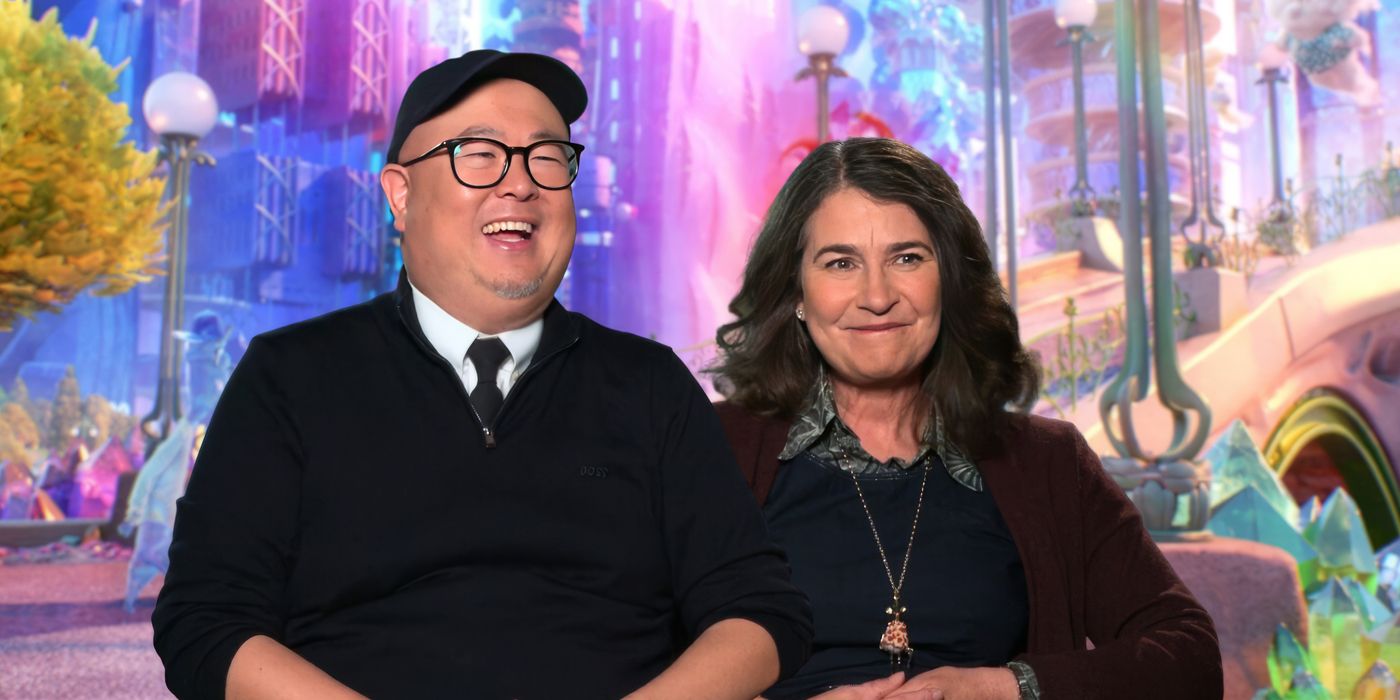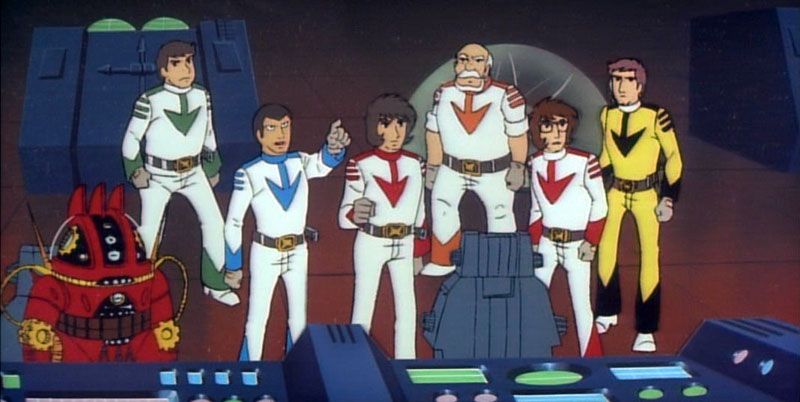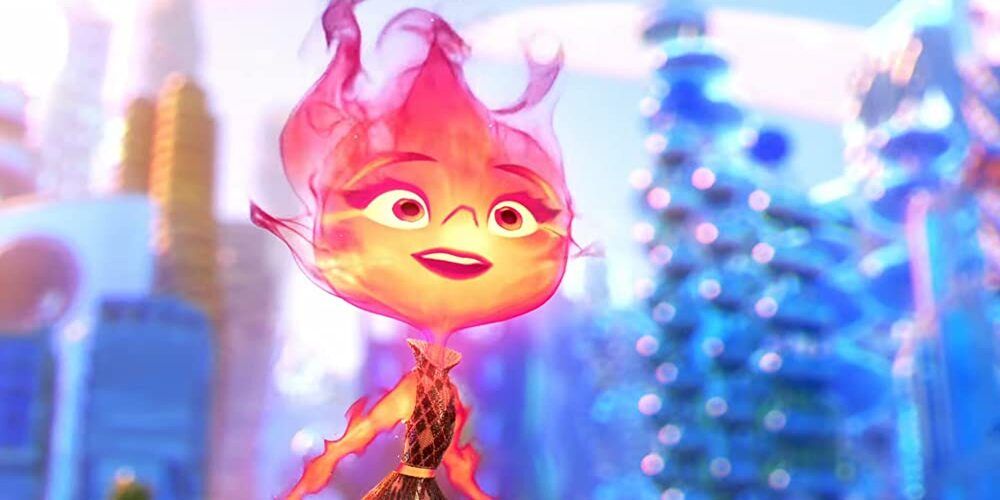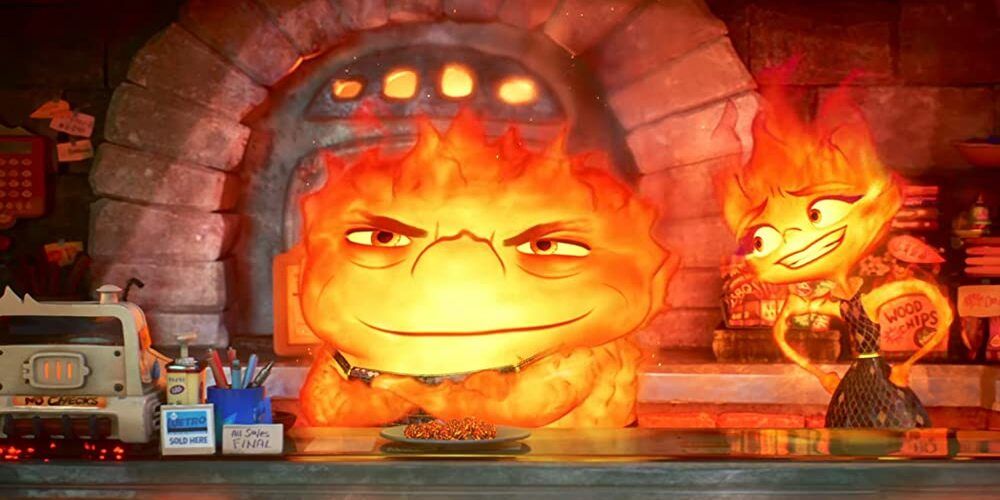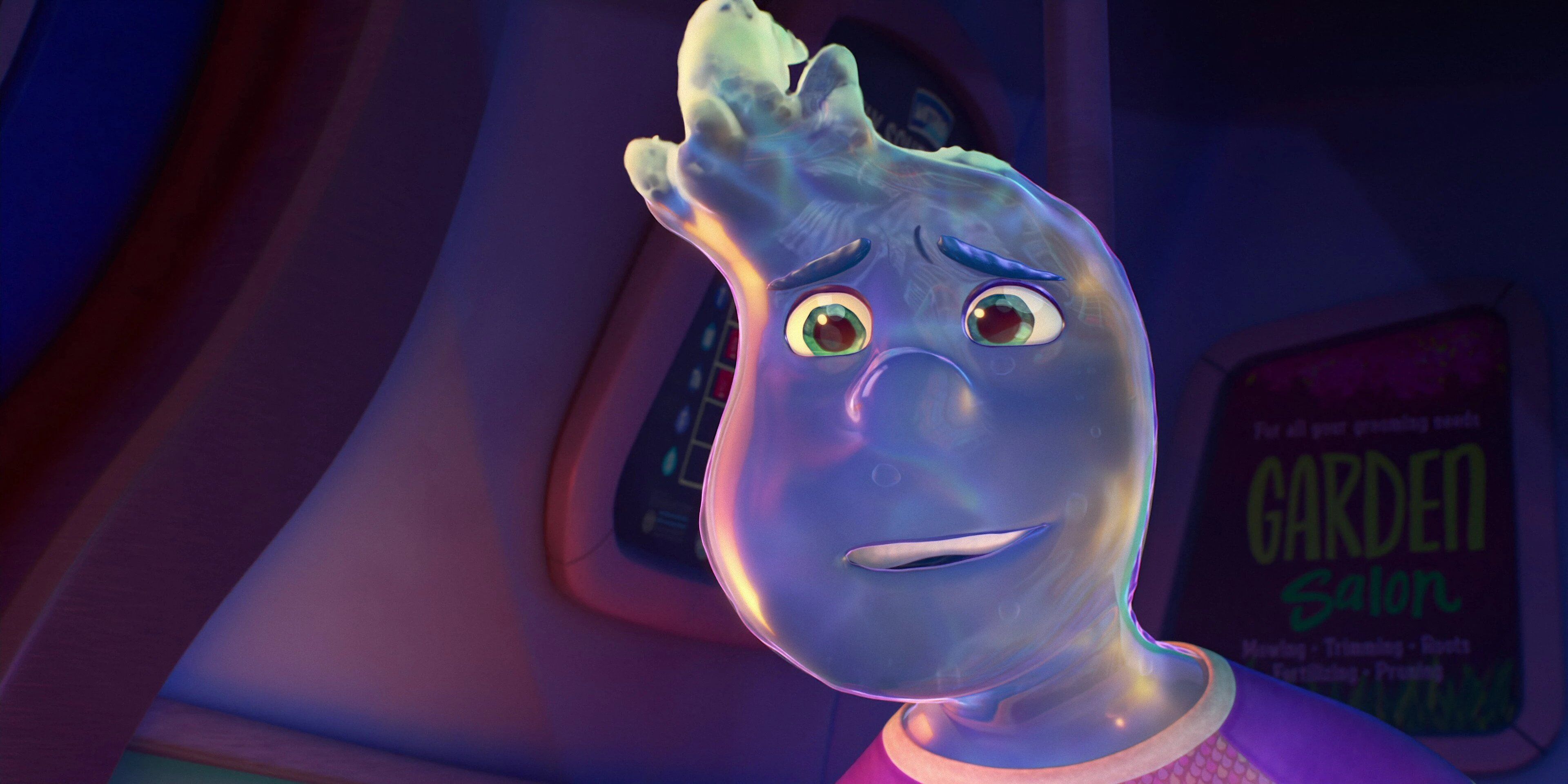Disney’s newest Pixar film, Elemental, is an original concept co-written and directed by Peter Sohn (The Good Dinosaur). The story centers on two young adults, Ember Lumen (Leah Lewis) and Wade Ripple (Mamoudou Athie), who at first glance seem an odd pair, but their differences allow them to open up to new perspectives as they help each other come to a deeper understanding of identity and the world around them. To learn more about the boundary-pushing technology and the emotional core of this brand-new story, Collider’s Steve Weintraub sat down with Sohn, who was joined by producer Denise Ream.
Elemental is a layered story that examines the dynamics of relationships between children and their parents, you and the person you meet on a train, and, quite literally, fire and water. Ember, who’s a second-generation immigrant in Element City, is poised and proud to take over her father’s (Ronnie del Carmen) shop, but when she meets the loveably “go-with-the-flow” Wade, a Water Elemental, he helps her stoke the flames of her curiosity and creativity. In addition to Lewis, Athie, and del Carmen, Elemental features the vocal talents of Catherine O’Hara as Wade’s mom, Brook, Shila Ommi as Ember’s mom Cinder, and Wendi McLendon-Covey as Wade’s boss, Gale.
Before grabbing your tickets, find out why this story is so personal to Sohn, how it changed throughout production, and why Ember was nearly a “monster” straight from The Lord of the Rings. Sohn and Reams discuss with Weintraub the lengths they went to in order to nail the perfect character designs for Elemental by partnering with Disney Research Studios in Zurich, as well as why they didn’t go with an A-list cast to voice their film. For more behind-the-scenes, check out the full interview in the video or transcript below.
COLLIDER: So first of all, I want to say congrats on the movie, I really emotionally connected. It is very familiar to my own story. I just want to say very congrats, extremely well done.
PETER SOHN: Thank you very much, Steve. That means a lot.
But I want to start with the most important thing, what is it going to take for Pixar to make a Star Blazers movie?
SOHN: [Laughs] Oh man! I'm with you on that one. There are so many of that era, for me, that I would love to see on the big screen, 1000%. I think you and I need to start a fund. I think we need to start a fund now that can start to grow into a movement because I think that's the only way to get that triggered.
I mean Star Blazers, Robotech, Force Five, Grendizer…
SOHN: Which generation of Robotech?
It’s Macross Saga, but I can give you a list. I'm obviously messing around.
DENISE REAM: I'm gonna take the Jane Austen version of an animated film.
[Laughs] So being serious, one of the things that I really respected about this is that your two lead voices are not named Chris Pratt and Gal Gadot. You went with the real voices rather than celebrity casting. They're not huge names that would go on Good Morning America, you know? Can you talk about that aspect because I found it great?
SOHN: So much of the journey of this film has come from a very sincere place, like in terms of wanting to thank our parents. I know that's a weird reach to come into the voices, but even when looking for the voices, it was a very sincere thing. I really was looking for two pieces of a performance that supported the character and a little bit of the element sort of nod. And for Leah, she did this tremendous performance in a movie called The Half of It where she showed a fierceness as she's discovering her identity, and then this tenderness at the same time for her family that I thought a character like Ember needed. But she has a smoky voice. When she sings, there's a smoky quality to it that immediately connected me to it outside of celebrity or whatever. Just like, “Oh, that felt so sincerely Ember!”
And the same for Mamoudou, watching him in several performances where you could feel his sort of go-with-the-flow attitude. There was this movie called The Uncorked where he was sort of flirting with someone, but he just moved in and out of that, and selling the wine, as his character was doing, effortlessly. And that brought me to this, like, “Oh my gosh, could he do it?” And then Wade cries a lot in this movie, and I had heard a lot of different performers crying, and there was all this very flat sort of pinching thing that sort of hurt after a while, but he did this thing on Oh Jerome, No where he found a goofy version of it, but it was still sincere, and then a really dramatic version of it that still totally brought you in and pulled you in. It was all of those pieces that just said, “You know what? Yeah, they are really these characters.”
REAM: It's a good question because you have to think about that, right? And ultimately, I do love that we get the support of, “What's the best thing for the actual film?” And that's what I feel we were lucky to settle upon.
Listen, I know about the editing process and so much changes with an animated movie, especially. So talk a little bit about what it was like showing it for the first time to the executives or friends and family, and what did you learn from that screening that ultimately impacted the finished film?
SOHN: That's a good one.
REAM: Oh gosh, we’ve had so many screenings.
SOHN: But a big one for me was my parents passed away during the making of this thing, and the story took a dark turn. Like, I didn't even know that it was, and these things aren't like a push-button thing to make — you know the process — they take months and months. And I was filtering something dark through this. There was a war between the father and a daughter that was just so spiteful. And after that screening, I remember having conversations with a lot of the support around here. Pete Docter, our executive producer, was just like, “Hey, Pete, I know you're going through it. Was this the film that you always wanted to do?” And [I said], “No. You know, you were there, Pete. This was always a hopeful thing that we were doing.” And I remember him going like, “You know, there's a lot that you're going through that we can feel in the film, and you're gonna need some time.”
After that moment, a lot of the ideas I came back to– I'm sorry, I'm gonna get emotional. So, anyways, it re-invigorated the original heart to this thing, and then that film started becoming what we finished.
REAM: I mean, those screenings end up being really important because, as Pete's alluding to, we sort of lose our way. And so sometimes, you know, bringing in that fresh audience at the time…I'm always amazed, like, “Are people gonna still laugh? Are they gonna still connect?” And so, that's why those are really important, I would say, throughout our process, is bringing those people in.
One of the things that I also really enjoyed is, I expected there to be a villain at some point who's stopping them from doing something, and in actuality, there is no villain. It's just life, and it's about family and relationships, and I found that so refreshing. Can you talk about that aspect?
SOHN: Yeah, we did have a villain at one time in the middle, I think it was. It wasn't connected to that dark version, but once we went down that route, the whole studio missed the point of it, meaning they all missed, like, “Oh, what happened to the connection between these?” Because there's so much exposition you have to do with something like that. But again, it was about coming back to the original intent about connection and what could happen between fire and water. So then that version went away, and then we just focused on what does it mean and how to exploit a relationship between fire and water like that?
If you don't mind, I'm going to ask a technical question. Every Pixar movie has the craziest animation. I'm always sitting there looking at it and mesmerized, but I would imagine with each film, there are these technical challenges or new software you need to invent. So what were some of the things that you were up against on this one where you had to write new code, or there were new technical things that have never been overcome?
REAM: It was definitely the two characters. You know, because they’re simulations, we had no pipeline at all to create these characters. And Pete was really emphatic about them being the actual element and not being a person on fire, like Jack-Jack. So that would set us on a course that we had to kind of add a department. We spent a lot of time doing experimentation and iteration because we want them to feel like fire, but a realistic fire character could be fatiguing to watch and maybe not that appealing. So, we worked with Disney's research group in Zurich. A lot of smart people working many, many, many months doing a lot of experimentation and iteration.
SOHN: Yeah, and the game of those experiments were really trying to just control it, give us some tools to control the flame. When they first pushed the button on her, she looked terrifying, she looked like a character from The Lord of the Rings. She was just this monster, and real fire is so busy, but the technology that Denise is talking about from Zurich just held it. We fought it most of the time, but it was that technology.
REAM: I mean…Wade, the water character, ended up being so much more complicated. Water is always harder, and that continued to prove to be the case.
SOHN: Yeah, Wade was a monster. He was just awful the whole way. The lighting of him changed in every shot because in the basement, he would disappear because there's no light bouncing off of him. And then when he was in sunlight on the rooftop, he would just glow like this gigantic spotlight, and every sequence, he was just this maniac of… Look, we didn't have those issues like Inside Out where, “Oh, emotions could be anything, there is no look,” but everyone knows what fire and water looks like. There are moments where Wade could look like jelly just by moving one ingredient that was too slow or something. Or he could look like a ghost with just changing one little layer. He was a monster.
I think on the Blu-ray, you should include some sort of sizzle where you demonstrate some of these things.
SOHN: Oh yeah, oh yeah, there's plenty of that!
REAM: There’s a lot! [Laughs]
Elemental is now in theaters.

